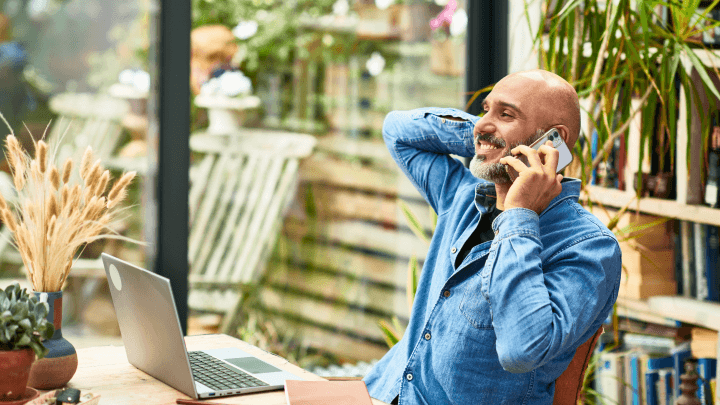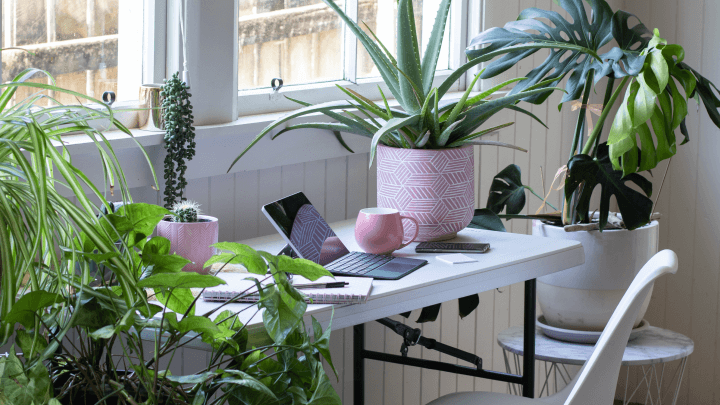We've partnered with The Telegraph to create a series of articles designed to help you embrace connectivity and use tech for good.
Caring for pets on office days: the smart tech that can help

We've partnered with The Telegraph to create a series of articles designed to help you embrace connectivity and use tech for good.
For many, home working has been a liberation, making them better at their jobs and making their jobs fit better into their lives.
At least, that’s what should happen. But if you’re not careful, the reality can be more work-life mush than work-life balance, with your professional and private lives clashing rather than complementing each other.
Leading psychologist, Dr Fiona Murden, shares her strategies for working from home.
Whether you’re a remote or hybrid worker, your days need structure. This starts with what would have been your commuting time.
“Block it out,” says Dr Murden. “If you’d normally listen to podcasts on your commute, listen to a podcast. If you’d walk to the station, go for a walk. Don’t just use it to get to your computer earlier. You won’t be more efficient, you’ll just be more tired.”

It may be tempting to eat your lunch al desko, but resist. Proper breaks are essential for both performance and wellbeing, so schedule time for them.
“Set meetings to finish at 9.55am rather than 10am, so you have time to stand up, move around and make a cup of tea between calls,” Dr Murden suggests.
On shared calendars, it may help to call longer breaks something else to prevent colleagues encroaching on your ‘me’ time.
Digital devices are distracting only if you let them be; learn to use them in a more efficient way and they can actually support your wellbeing, helping you to unwind and stay close with friends and family.
The ever-popular Calm app has guided meditations, breathing exercises and relaxation techniques. Learn how to manage stress, balance your mood, refocus your attention and sleep better, so you’re in the best possible shape for your working day.
Dr Murden suggests pruning your smartphone home page to show apps that are good for your wellbeing—she likes to read, so puts Kindle front and centre—while putting social media further back.
Reminders can be useful too, gently nudging us to stand up, take breaks or do exercise.

Work used to end when you left the building, but that’s harder to do when you live in your office.
For a better work-life balance, strengthen the psychological boundaries between one and the other. “At the end of the work day, shut down your computer and walk away from it. If you work at the dinner table, clear your notepads away,” Dr Murden says.
If possible, try not to respond to emails once you’ve signed off for the evening and avoid working in your bedroom.
“Don’t think that spending a day on video calls is the equivalent of spending a day with people. You’re not connecting the same way. You’re not getting the same energy,” Dr Murden says.
Find time to sit down with someone else, face to face, particularly if you work remotely most of the week. “Arrange to meet a friend who lives nearby. That way there’s social accountability—you don’t want to let your friend down.”

Home can be a distracting place so set some ground rules. “If you’ve got 10 minutes between meetings, don’t do the washing. If it annoys you, just move it out of your line of sight,” Dr Murden says.
Thinking about what you can and can’t see from your desk is important generally. Plants and posters are good; clutter is bad.
Prioritising your wellbeing is easier said than done, particularly when you’re at home alone. So enlist a little help.
“Talk to someone about how you optimise your wellbeing at home, because it’s hard to do on your own,” Dr Murden says. “Ask a close friend or family member when they see you at your best or when you get most frustrated. It gives you perspective, and can help you figure out how to make it work for you.”

It’s hard to keep your work stress-free when you’re staring at your laptop’s spinning wheel of doom. Fortunately it’s possible to set up your home workspace with inner peace of mind. EE Smart Hub allows multiple devices to connect at once, giving you the ability to prioritise uninterrupted bandwidth for important work. All you have to do is press the Work Mode button on your EE app.
Keeping a connected home also makes it easier to unwind when the working day is over. Burn away the tension with Apple’s Fitness+ classes, with up to six months free with EE.